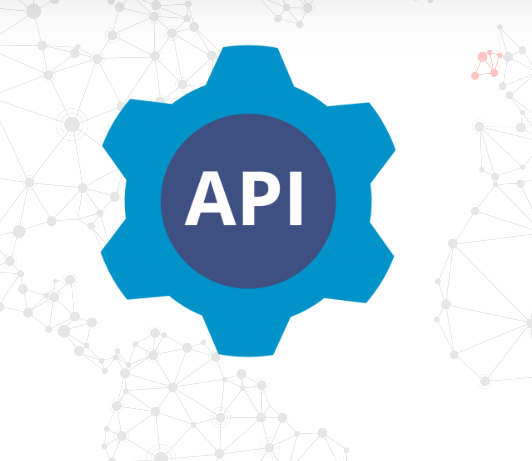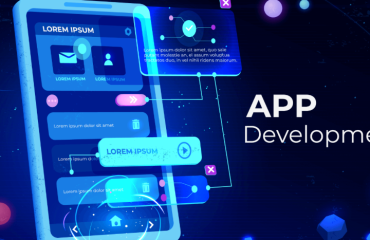API Development & Integration: Enhancing Connectivity and Streamlining Business Operations
In today’s digital landscape, businesses need to ensure seamless communication between different systems, applications, and platforms. API Development and Integration play a pivotal role in enabling this connectivity, allowing different software systems to work together effectively. APIs (Application Programming Interfaces) are the building blocks that allow disparate systems to interact with one another, whether it’s for sharing data, automating workflows, or enhancing user experiences.
Let’s explore the key aspects of API Development and Integration and how it can help businesses optimize their operations.
What is API Development?
API development involves designing, creating, and maintaining a set of rules and protocols that allow software applications to communicate with each other. APIs define how requests for data or actions should be made, how data should be structured, and how the response should be delivered. API development ensures that these interactions are seamless, secure, and efficient.
What is API Integration?
API integration refers to the process of connecting different software systems using APIs to enable them to work together. Whether integrating third-party services, internal platforms, or external databases, API integration ensures smooth data flow and communication across systems, enhancing the overall functionality and efficiency of the business.
Why API Development & Integration Matter?
- Improved Interoperability APIs allow different software applications, platforms, and services to work together, regardless of the underlying technologies. This enables businesses to use a variety of tools and systems in harmony, without the need for complex custom solutions.
Whether it’s connecting CRM software with marketing platforms or integrating a payment gateway into an e-commerce site, API integration ensures seamless data exchange and operational efficiency.
- Faster Time-to-Market Instead of building every functionality from scratch, businesses can use pre-built APIs to integrate third-party services. This accelerates development and reduces the time needed to launch new features or products.
For example, integrating an existing API for payment processing or authentication saves development time, enabling businesses to focus on their core product or service offerings while relying on trusted third-party solutions.
- Increased Flexibility and Scalability APIs provide the flexibility to adapt and scale applications according to changing business needs. As businesses grow and expand, they may need to connect new systems, integrate additional data sources, or add new features to their existing software. With API integration, this becomes easier, allowing systems to scale without requiring a complete overhaul.
Businesses can also take advantage of new technologies and services without disrupting their existing infrastructure, thanks to the modular nature of APIs.
- Enhanced User Experience APIs enable businesses to provide more streamlined, personalized, and integrated user experiences. For example, by integrating with social media APIs, e-commerce platforms can allow customers to log in via their Facebook or Google accounts, making the registration process faster and more convenient.
Additionally, integrating APIs that provide real-time data, such as weather updates, product stock levels, or live customer support, enhances the user experience by providing timely and relevant information.
- Automation of Business Processes One of the key benefits of API integration is the ability to automate business processes. APIs can enable systems to exchange data and trigger actions automatically, reducing manual intervention and improving operational efficiency.
For example, APIs can automatically update inventory levels when an order is placed, trigger alerts when a system error occurs, or send notifications when a specific milestone is reached.
- Cost Efficiency By leveraging pre-existing APIs, businesses can avoid reinventing the wheel and reduce development costs. Building custom solutions for every task can be expensive and time-consuming, but using third-party APIs for common functions like payment processing, email marketing, and data storage can significantly lower costs.
Moreover, API integration enables businesses to optimize resources by connecting systems and automating tasks that would otherwise require additional manpower.
Key Steps in API Development and Integration
- Requirement Analysis The first step in API development is understanding the business requirements. This involves identifying the systems or services that need to be integrated, the data that needs to be shared, and the specific functionality that the API will provide. Clear requirements ensure that the API is designed to meet business goals.
- API Design Once the requirements are defined, the next step is to design the API. This includes creating the API endpoints (URLs), determining the data format (e.g., JSON or XML), specifying authentication methods (e.g., OAuth), and setting up error handling procedures. The design should ensure the API is easy to use, secure, and efficient.
- API Development In this phase, the actual development of the API takes place. Developers write the code, build the endpoints, and implement business logic to ensure the API functions as intended. It’s important to follow best practices for performance, security, and error management during development.
- API Testing Before deploying an API, thorough testing is necessary to ensure it functions correctly. This includes functional testing to verify the API performs as expected, security testing to ensure data is protected, and performance testing to ensure the API can handle high volumes of traffic without crashing.
- API Integration Once the API is developed and tested, the next step is integration with other systems or applications. This may involve connecting third-party services, internal databases, or other software platforms. Proper integration ensures smooth communication and data flow across systems.
- Deployment and Maintenance After integration, the API is deployed to the live environment. Ongoing maintenance is crucial to ensure the API remains functional, secure, and efficient. Regular updates, bug fixes, and performance enhancements are necessary to ensure the API continues to meet business needs over time.
Key Considerations for Successful API Development & Integration
- Security: APIs often handle sensitive data, so it’s important to implement proper security measures such as encryption, authentication, and authorization to protect data and prevent unauthorized access.
- Documentation: Comprehensive and clear documentation is essential for successful API development and integration. Well-documented APIs ensure that developers can easily understand how to interact with the API, reducing integration time and errors.
- Versioning: As APIs evolve, versioning ensures that changes do not disrupt existing integrations. Proper version control allows developers to maintain backward compatibility and provide updates without breaking existing functionality.
- Monitoring and Analytics: Continuous monitoring of API performance helps detect issues early and ensures high availability. Analytics can provide insights into API usage patterns and help optimize performance.
Conclusion
API development and integration are critical components for businesses looking to improve connectivity, automate processes, and provide enhanced services to their customers. APIs enable software systems to communicate seamlessly, integrate third-party services, and scale with ease. By leveraging APIs, businesses can unlock new opportunities, reduce costs, and improve efficiency across all operations.
Partner with us to develop and integrate powerful APIs that can drive innovation and enhance your business’s capabilities. Let’s create seamless connections that power your success.








